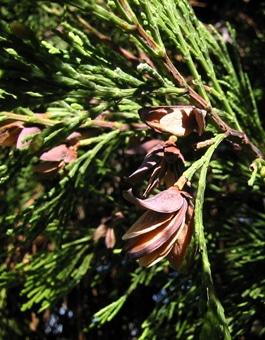

Ever wonder why pencils smell so good?
The name of the incense-cedar is a bit of a misnomer, because it is in fact not a true cedar. The only true cedars are found in the Mediterranean and Himalayas. Even so, the incense-cedar in Oregon is composed of fragrant wood that is resistant to insects and decay. Ever wondered why pencils sometimes smell so nice? They may just be made from incense-cedar. Its soft and pliable wood makes it ideal for producing pencils.
Range
Incense-cedar is often found on drier sites in the southern Willamette Valley and continue into the mountains of southwestern and eastern Oregon. It is a prolific seeder and has a great shade tolerance, which means seedlings and saplings do well even in the shade of larger trees.
Character
Incense-cedar can grow up to 150 feet. It often looks like a perfect pyramid when young, but will grow twisted and rumpled as it matures. It features scaly leaves that are longer than they are wide, unlike other false cedars, whose leaves are usually just as wide as they are long. The cones of an incense-cedar look like duck bills when closed and flying geese when open.
Understory
Incense-cedar grows well with lodgepole pine and other pine trees. The understory of these kinds of forests include snowberry, heartleaf arnica and antelope bitterbush, and is typically inhabited by chickadees, squirrels and Stellar’s jays.
Climate
Although the incense-cedar prefers direct sunlight, moist soil and a cool environment, it is well adapted to droughty conditions and extreme temperatures.
Management
Although the aromatic wood of incense-cedars is resistant to many insects and diseases, the heartwood can become infested with pocket dry rot as the tree matures.